PROTECT YOUR DNA WITH QUANTUM TECHNOLOGY
Orgo-Life the new way to the future Advertising by AdpathwayTall garden phlox brightens the border with a profusion of starry blooms in domed clusters. The native perennial attracts butterflies and hummingbirds with its flowers from summer until frost. Cultivars in deep pink, red, magenta, purple-blue, and bicolor enchant with improved form and disease resistance.
Cultivated since the 1600s, these historic perennials are a staple in the border. They create a long-blooming, eye-catching display among other summertime blooms and grasses.
Dividing summer phlox every few years benefits overall health. The species is prone to powdery mildew and needs good air circulation to thrive. As it slowly spreads, thinning the crown helps reduce crowding, increase airflow, and limit competition for space, nutrients, and moisture.
Division is also a quick and easy way to propagate new plants to expand the colony. Follow these easy steps to divide your summer phlox!
Dividing Summer Phlox
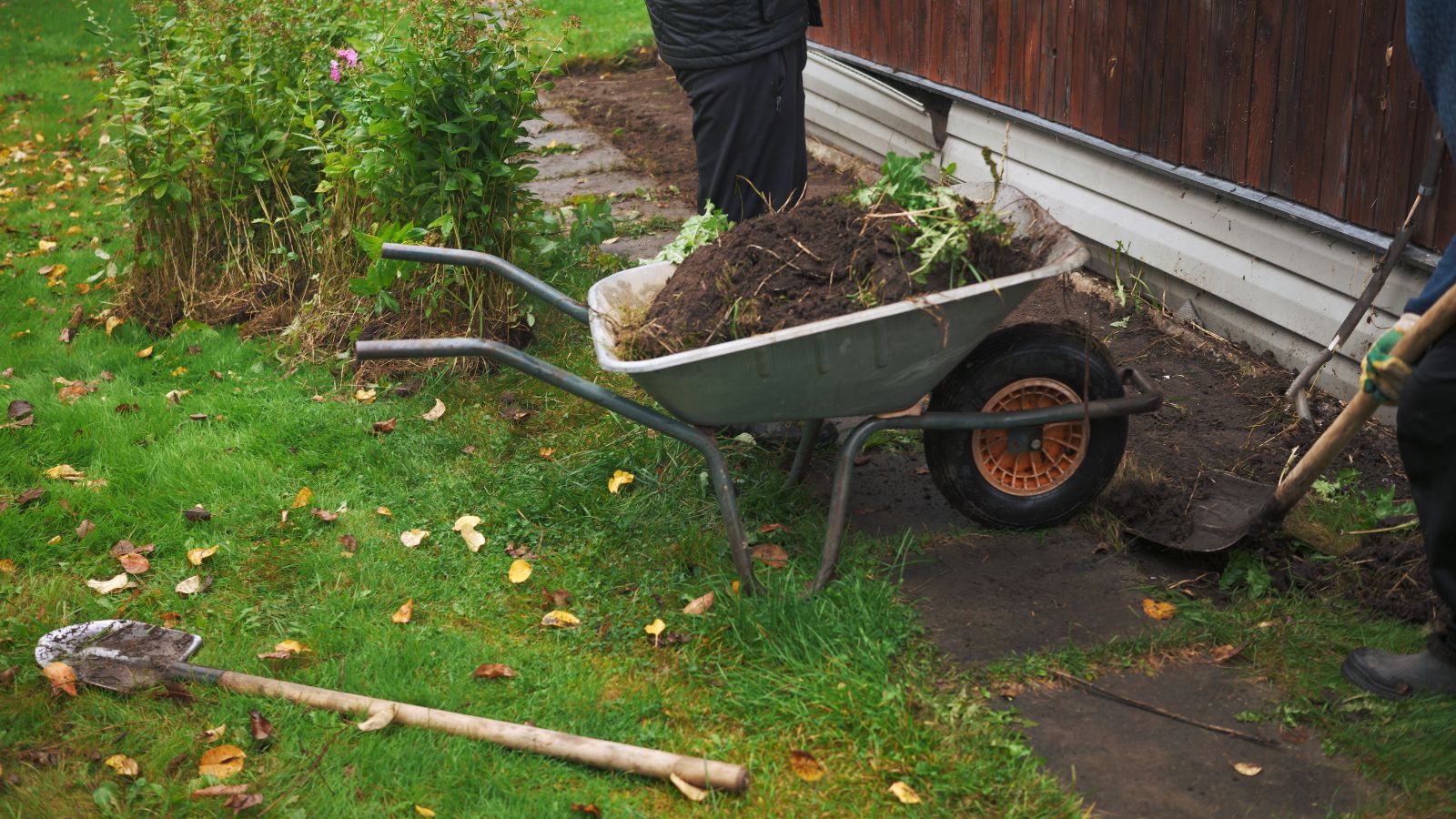 Dividing rejuvenates mature plants.
Dividing rejuvenates mature plants. Garden phlox is a clumping perennial that benefits from division every two to four years. The crown becomes less vigorous over time and shows reduced flowering. Dividing the main clump fosters the new growth that pops up on the perimeter.
Dividing rejuvenates growth, prevents cramped conditions, and promotes flowering. It also creates new plants for years of recurrent color.
In some cases, phlox may not thrive or fail to flower due to the growing location. In too much shade, for example, they’ll benefit from dividing and transplanting to a sunnier spot. As the garden matures, conditions around the original planting may change and warrant an adjustment.
Tools and Materials
 Clean your tools before you get started.
Clean your tools before you get started. Dividing summer phlox is straightforward and requires only basic garden tools. You’ll need a digging fork, shovel, or spade to lift the clump. Clean, sharp pruners or a blade cut the crown into sections and tidy the stems. Disinfect tools with an alcohol wipe, spray, or dip in 70% isopropyl alcohol.
When to Divide Phlox
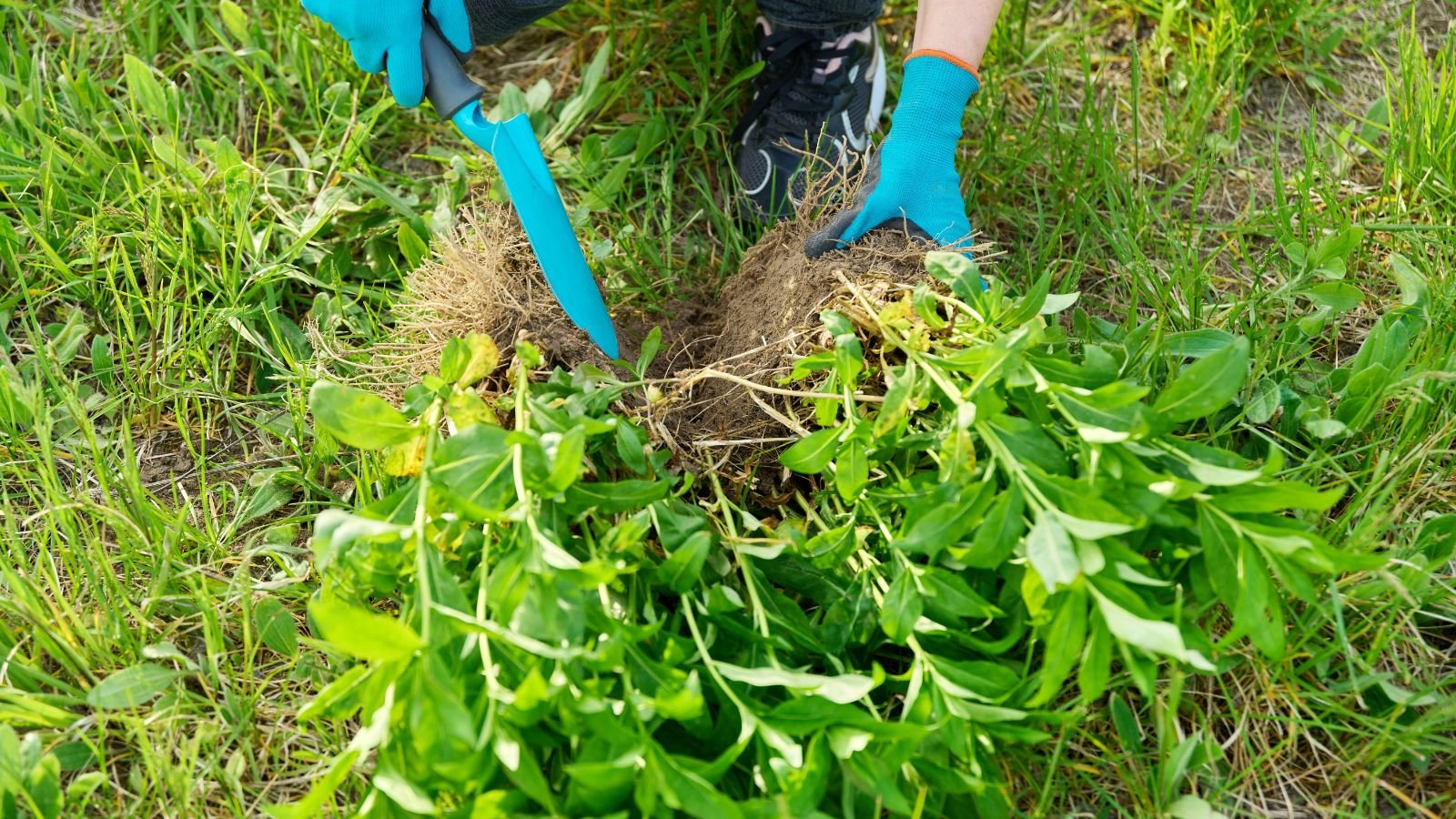 Divide during cool, moderate conditions.
Divide during cool, moderate conditions. Early fall and spring are the best times to divide summer phlox. The cool, moist conditions of these seasons let new divisions establish before extreme cold or hot weather.
In the fall, four to six weeks before the first frost is ideal. An early fall division gives roots time to settle in before heavy frost. In spring, divide summer phlox as new growth emerges in spring.
Digging, dividing, and replanting at other times of the year (especially in extreme heat or frigid conditions) can stress young transplants and the mature clump.
Step 1: Prep, Deadhead, and Cutback
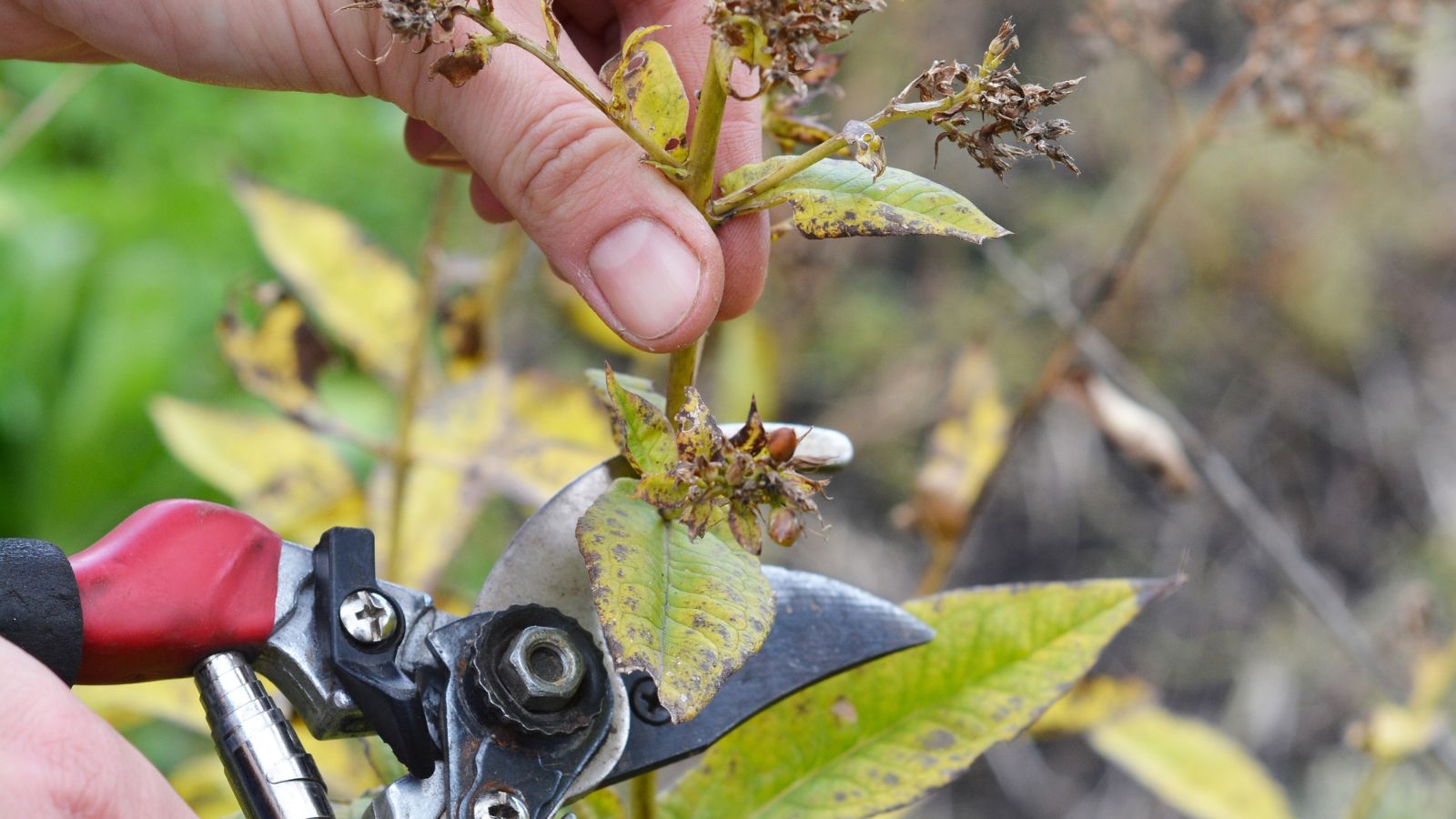 Clean up the plant before dividing.
Clean up the plant before dividing. By the end of summer, deadhead faded blooms, cut away weak stems, and remove any diseased portions for the best health prior to dividing. These are good measures against powdery mildew. Remove dropped plant debris to prevent harboring and transferring fungal spores.
Prepare the transplant area before dividing summer phlox, whether in the existing growing spot or a different location. Check soil quality and add compost or broken-down organic matter to increase richness.
Summer phlox thrives in organically rich, loose, and well-draining soils. They’ll tolerate lesser conditions, but clay and sand compositions benefit from extra compost. Lightly turn the soil to aerate it and promote root development for the transplants.
Step 2: Digging and Lifting
 Keep as much of the root ball intact as possible.
Keep as much of the root ball intact as possible. Water deeply the day before you divide summer phlox to promote water-filled roots and stems and easy digging. With a spade or digging fork, dig a wide berth of six inches around the crown. Dig deeply beneath to capture as much of the root system as possible, and lift the entire clump.
Rinse the roots with water or shake them gently to remove excess soil. Start from the outside of the clump, which holds the best divisions and freshest shoots.
Step 3: Making the Divisions
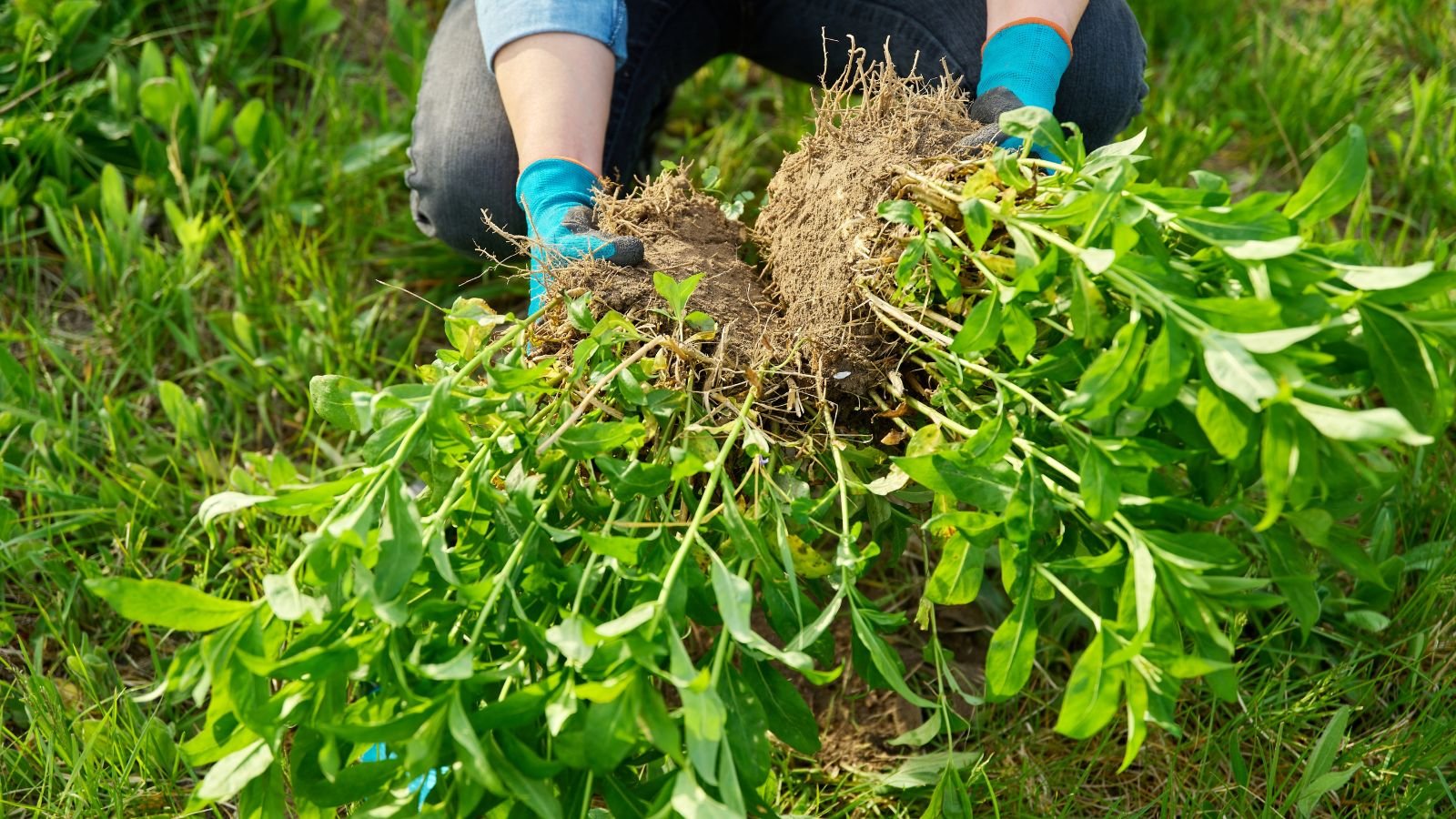 Split clumps into two or more divisions.
Split clumps into two or more divisions. With a sharp knife or spade, separate the clump into sections, starting with fresh growth on the perimeter. Separate offshoots and spreading roots. Each segment should have three to five viable stems and roots attached (these become the new transplants).
If the crown is dense and woody, lacking vigor, and showing less growth and flowering, compost the old, woody portion and plant the new offspring.
Step 4: Replanting
 Plant immediately after dividing.
Plant immediately after dividing. Once divided, replant the summer phlox segments as soon as possible for viability. With the planting area prepped and amended, tuck the divisions into their loose, well-drained, organically rich soils.
Dig a hole large enough to accommodate the roots, and position the new “crown” one to one and a half inches beneath the soil surface. Space the divisions at least 18 inches apart, depending on the variety, for adequate airflow as shoots develop and to plan for maturity.
Summer phlox also grows beautifully in containers. Situate the transplants in a high-quality potting mix. Ensure pots and potting media are well-draining and follow the crown placement for in-ground specimens (about one inch beneath the soil surface).
Step 5: Maintenance
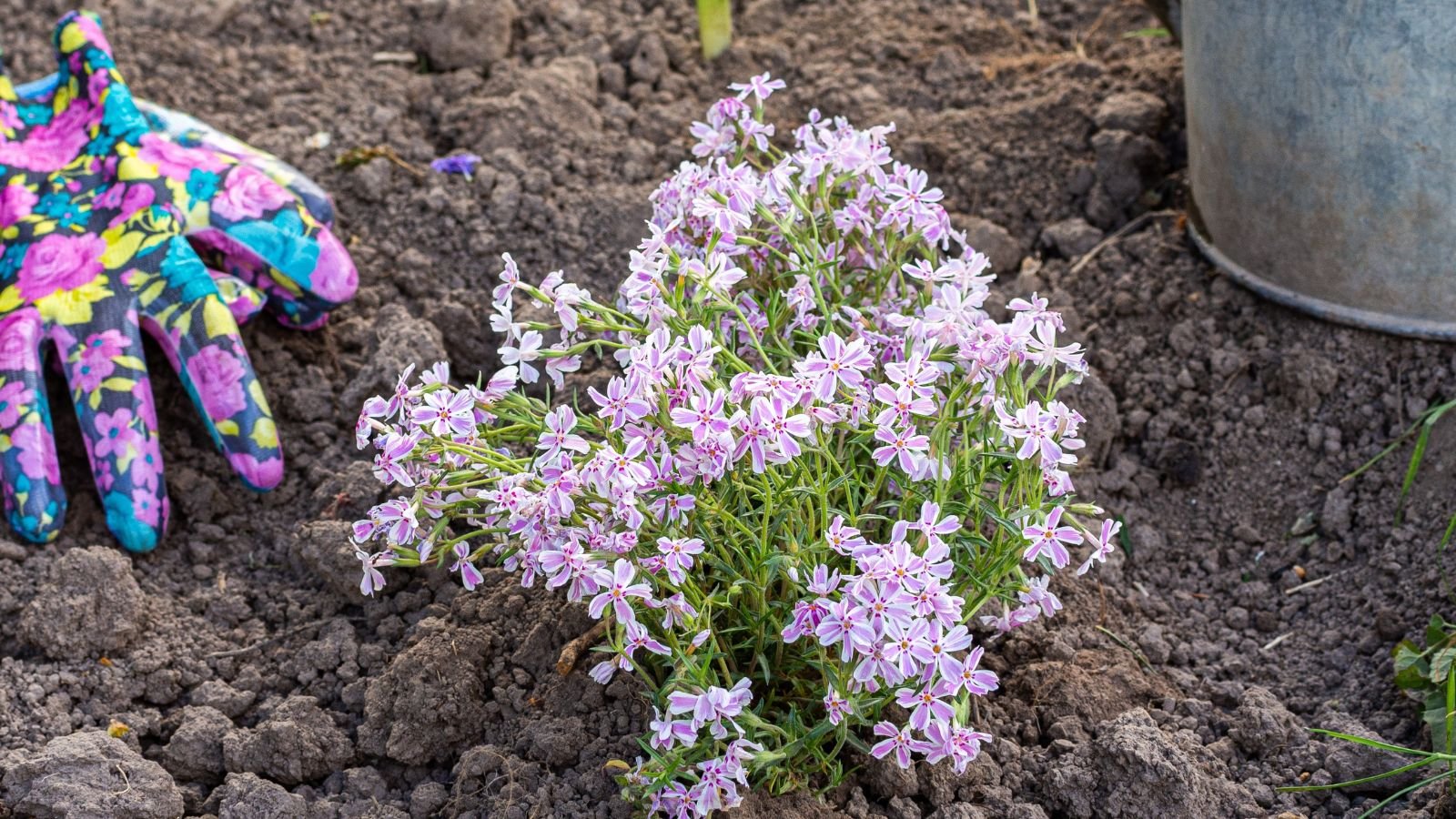 Keep up with care to help them recover.
Keep up with care to help them recover. Water after you divide summer phlox and aim for even moisture. In the fall, water until the first frost. This produces the hardiest specimens for overwintering.
Depending on your climate, regular fall moisture is often enough. Supplement with irrigation during dry spells. There’s no need for supplemental irrigation after frost, during dormancy.
For fall-planted transplants, add a thick mulch layer as temperatures drop for winter protection in cold climates. Six inches of straw, pine needles, or leaf litter helps protect against natural freeze/thaw cycles and frost heaving, which can damage the young, sensitive roots.
Remove the thick mulch layer in early spring to make way for new growth to emerge. Maintain a two-inch layer (off of the stems) to regulate soil temperatures and retain moisture.
In spring and summer, consistent moisture usually entails watering once or twice weekly. About an inch of water per week, whether from rain or supplemental irrigation, is sufficient. Phlox doesn’t tolerate saturated soils, so ensure good drainage to avoid fungal problems.
In nutrient-rich soils, Phlox paniculata doesn’t need fertilizer to flourish. If you want to give a nutrient boost, hold off on fertilizing fall divisions until spring. In the fall, there’s no need to encourage new growth before dormancy.
Popular Varieties
Phlox paniculata is the most popular of all the phlox species (the genus also includes creeping and woodland types). From pale pink to crimson, color-rich selections abound. Whether old-fashioned pass-along plants or newer cultivars, P. paniculata earns its spot in the border.
‘Jeana’
 This variety has beautiful pink flowers.
This variety has beautiful pink flowers. This exceptionally sturdy and floriferous selection is the 2024 Perennial Plant of the Year. ‘Jeana’ has a tall, sturdy habit that supports a big show of deep lavender-pink florets. The lightly fragrant, domed trusses top tall, stiff stems. While each floret is smaller than other varieties, the number per bunch more than makes up for their size.
In addition to its ornament, ‘Jeana’ offers ecological value. The nectar-rich blossoms are a magnet for butterflies, moths, hummingbirds, and other pollinators. Long-blooming, ‘Jeana’ shows color through early autumn.
Jeana Prewitt discovered the selection growing wildly in a large colony along the Harpeth River near Nashville, Tennessee.
‘Glamour Girl’
 Flowers grow tall above the green foliage.
Flowers grow tall above the green foliage. ‘Glamour Girl’ shines in hot, coral pink flowers on purple stems with healthy green foliage. One of the most disease-resistant varieties, it forms an upright, mounded spray of blooms.
Petals age from hot pink to light coral, adding to their glam. The midsummer trusses rebloom late in the season for another flushing show.
‘Glamour Girl’ is part of the Garden Girls™ series, bred to tolerate hot and humid conditions. Others in the series include ‘Uptown Girl’ in lilac, ‘Party Girl’ in pinkish-white, and ‘Cover Girl’ in a shock of violet.
‘David’
 The white blooms are ideal for neutral gardens.
The white blooms are ideal for neutral gardens. ‘David’ is a top-performing classic with bundles of snow-white flowers. It bears good powdery mildew resistance and shakes off minor infections.
‘David’ was initially discovered as a seedling from locally sourced wild populations at the Brandywine Conservancy in Pennsylvania. It became a favorite with its robust, clear blooms and strong stems.
‘David’ offers a generous peak bloom in mid-summer with continued free-flowering. The flowers are fragrant and withstand wind and weather on stout stalks.


 3 days ago
22
3 days ago
22


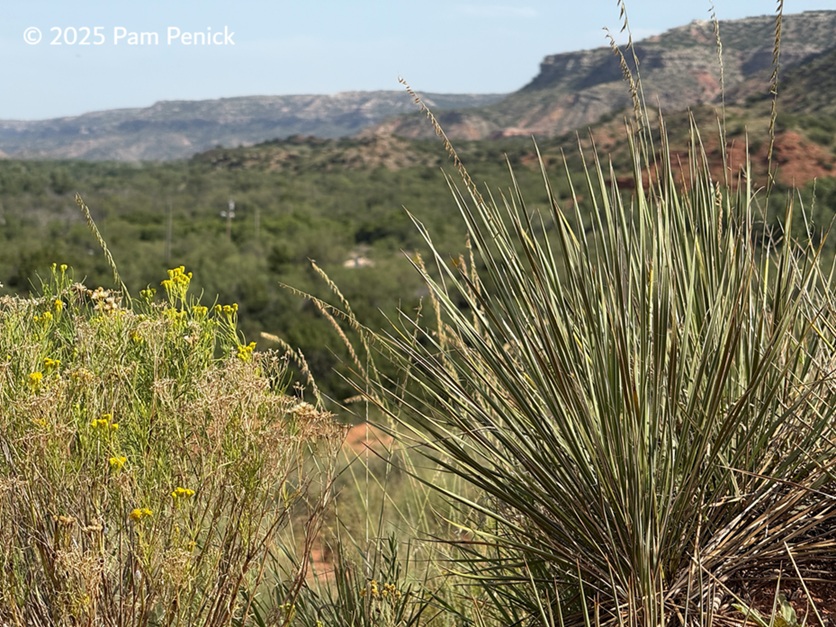
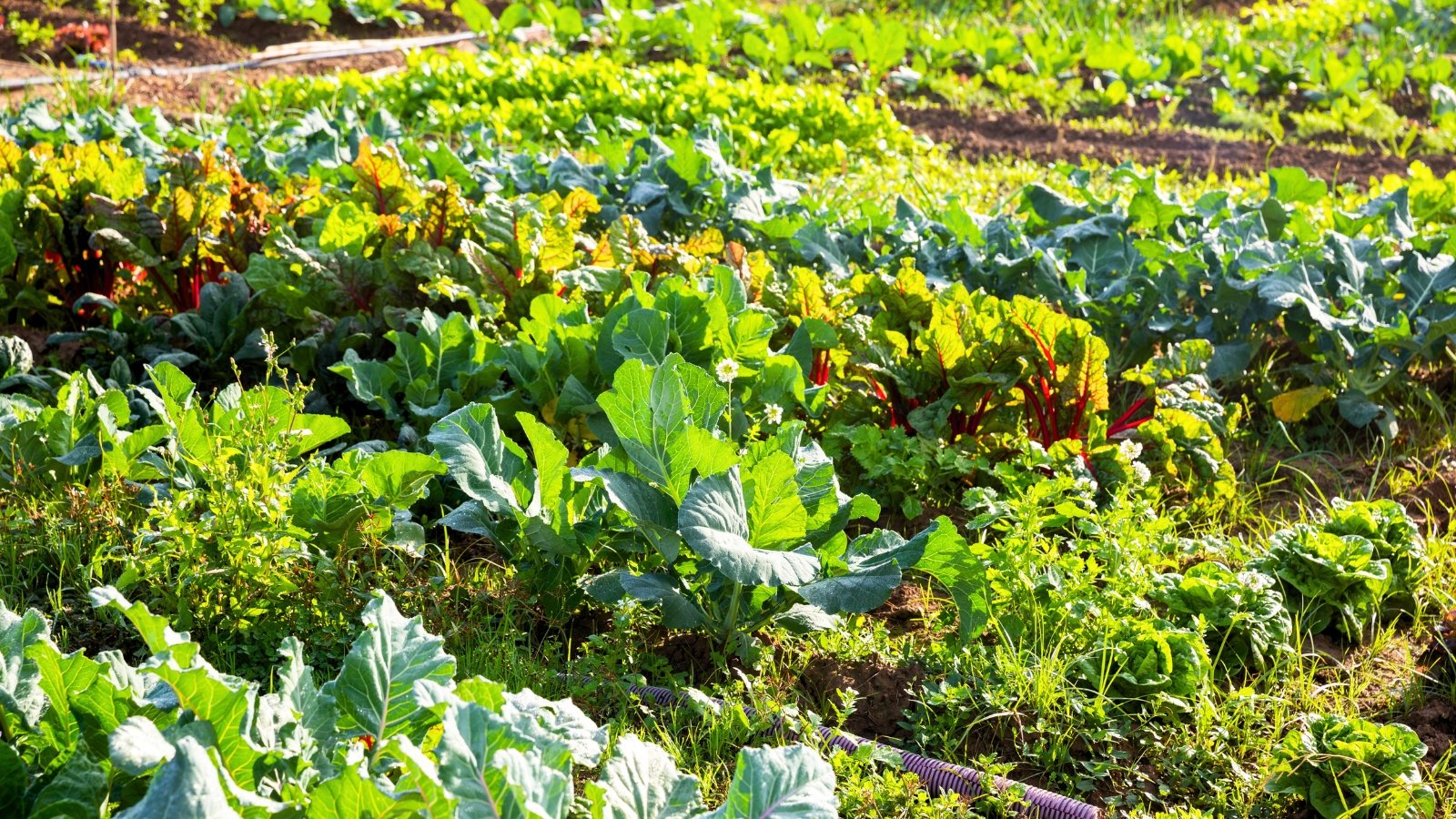
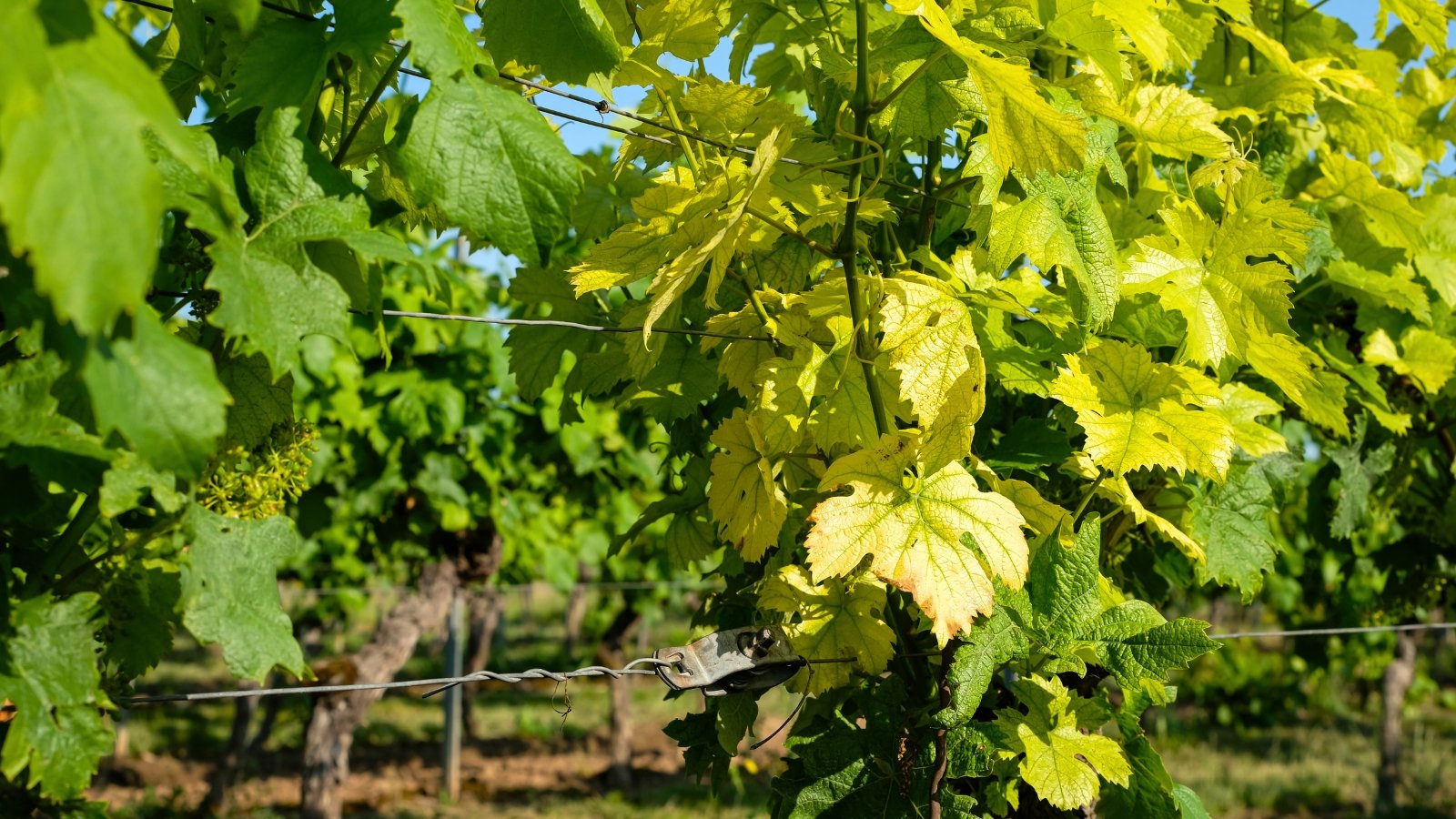

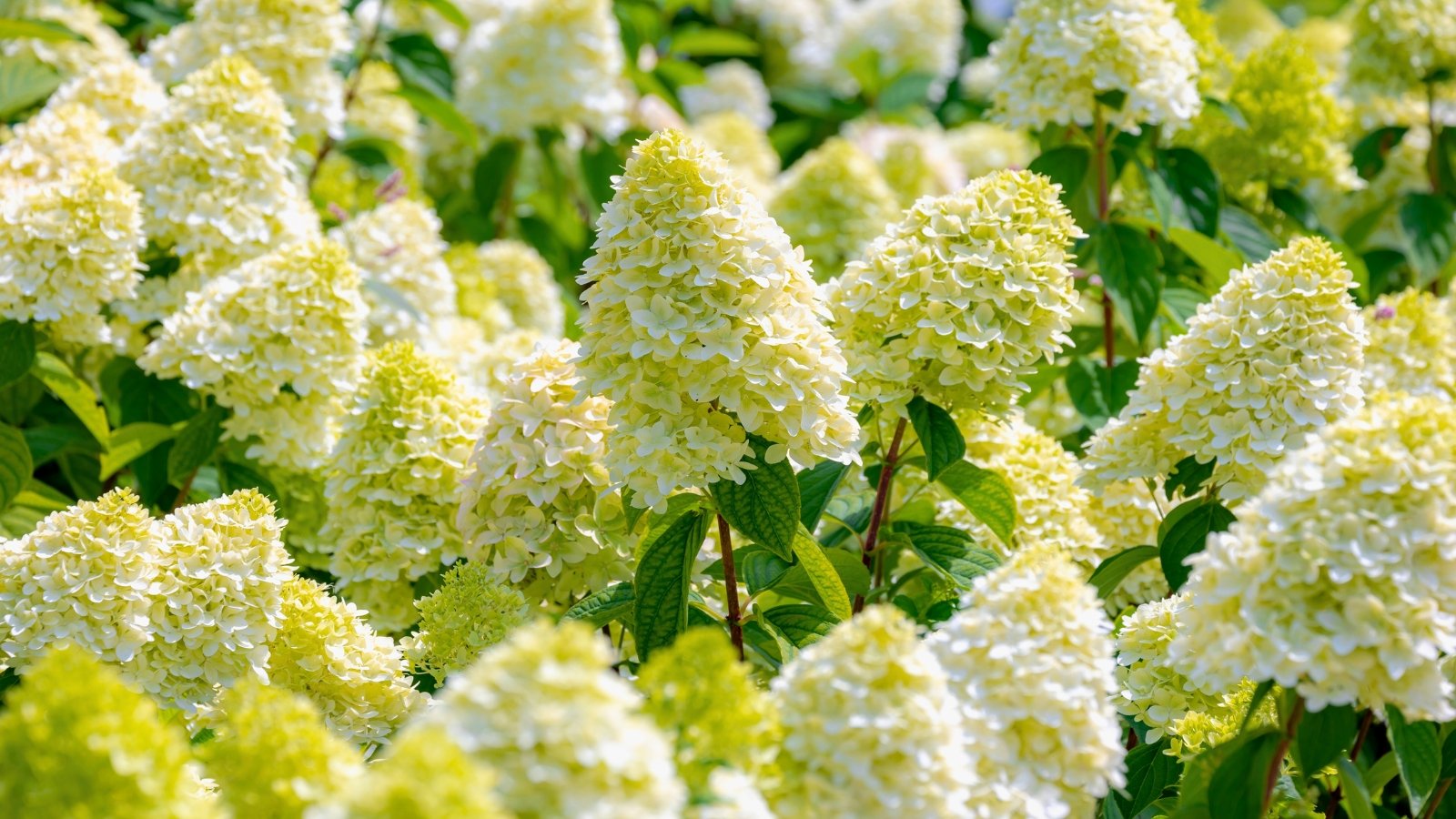














 English (US) ·
English (US) ·  French (CA) ·
French (CA) ·